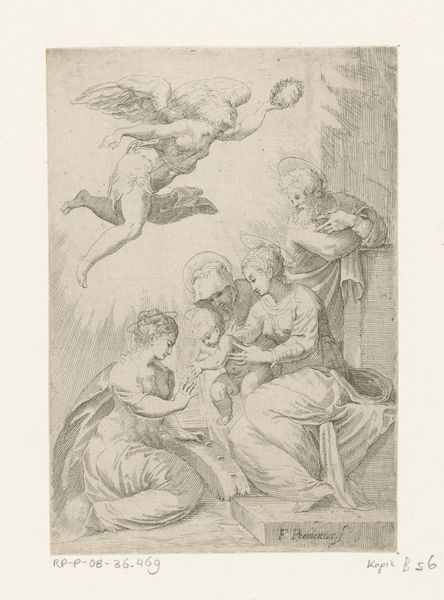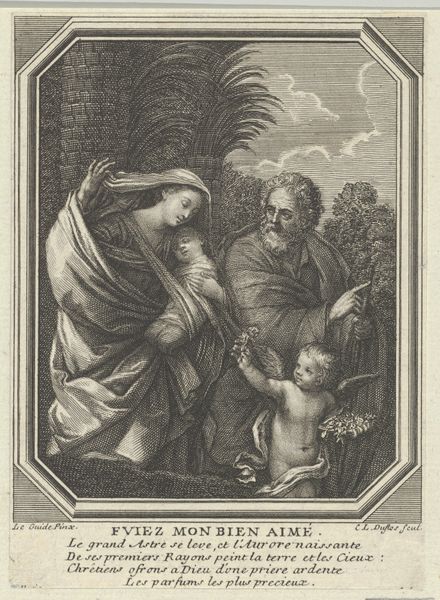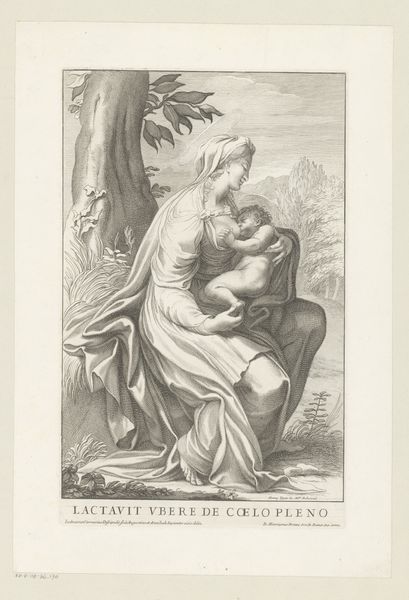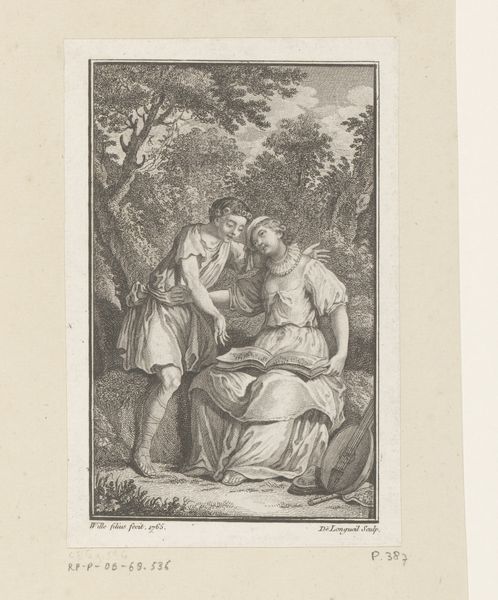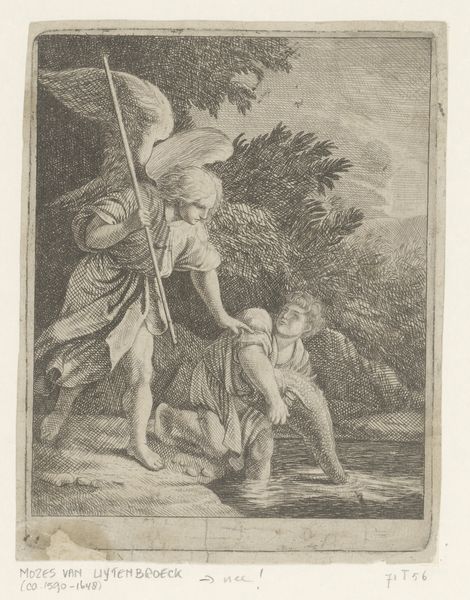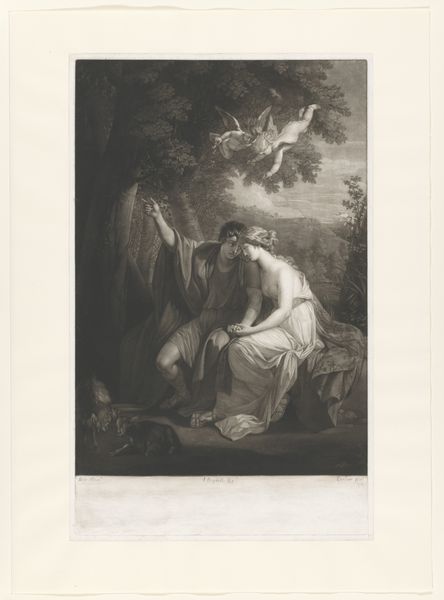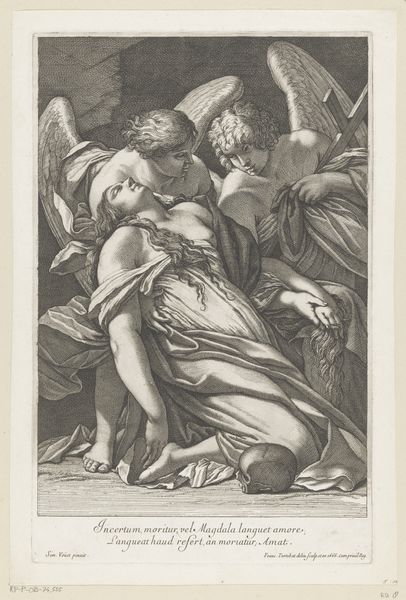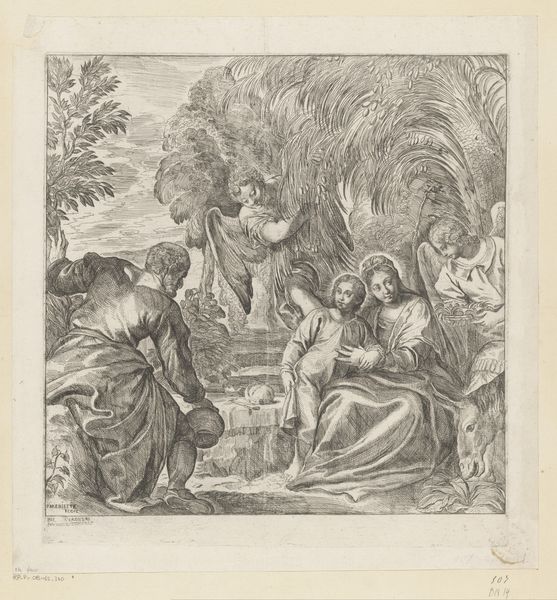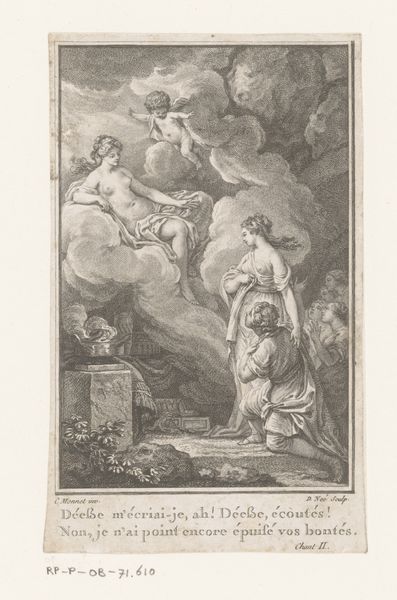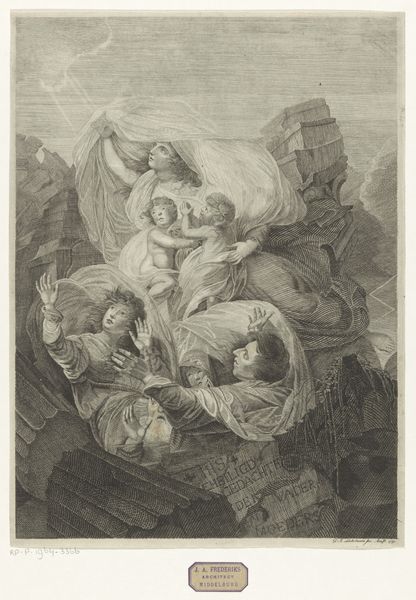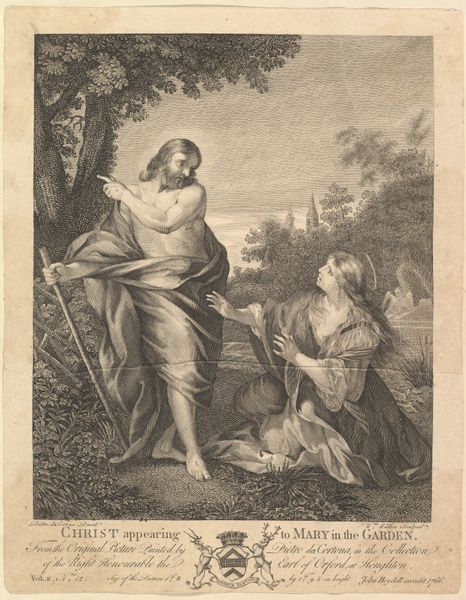
drawing, print, engraving
#
portrait
#
drawing
#
neoclacissism
#
allegory
# print
#
figuration
#
line
#
history-painting
#
nude
#
engraving
Dimensions: Plate: 10 5/8 × 9 3/16 in. (27 × 23.3 cm) Sheet: 12 5/8 × 10 3/8 in. (32 × 26.4 cm)
Copyright: Public Domain
Curator: This engraving, executed by Francesco Bartolozzi in 1788, depicts "Ariadne, Cupid, and Bacchus". It’s currently housed here at the Metropolitan Museum of Art. Editor: It's strikingly melancholic. The monochromatic palette lends a serious, contemplative air, particularly given the figures present. The texture created through the engraving technique gives it a delicate yet substantial presence. Curator: Bartolozzi masterfully employs line to define form and create a sense of depth. Look at the sinuous lines of Ariadne's drapery versus the sharper, more precise lines defining Cupid's wings. This meticulous detail serves the Neoclassical aesthetic, focusing on idealized forms. Editor: Indeed, and placing this work within its socio-historical context reveals much about the era’s artistic values. The composition draws heavily on classical mythology, aligning with the late 18th-century revival of interest in antiquity. Such depictions not only aestheticized mythological tales but also legitimized aristocratic patronage. Curator: Semiotically speaking, the iconography is quite rich. Cupid, of course, represents love, Bacchus, the god of wine and revelry. Ariadne herself symbolizes abandonment, and her pensive pose suggests profound emotional turmoil. The composition itself underscores the themes: the positioning of the figures directs the viewer’s gaze. Editor: It’s fascinating how these mythological figures become vehicles for exploring themes like desire, abandonment, and, ultimately, societal expectations of women during that time. Note the way her semi-nude body is positioned; even in distress, there's a palpable emphasis on beauty and vulnerability. Curator: Agreed. Ultimately, it exemplifies how careful arrangement of line, form, and symbolic figures constructs narrative and reinforces certain ideologies. Editor: Reflecting on this piece, I’m struck by how it invites us to consider the enduring dialogue between art and power. Bartolozzi's technique coupled with the chosen subject highlights how the artistic and socio-political intersect.
Comments
No comments
Be the first to comment and join the conversation on the ultimate creative platform.
